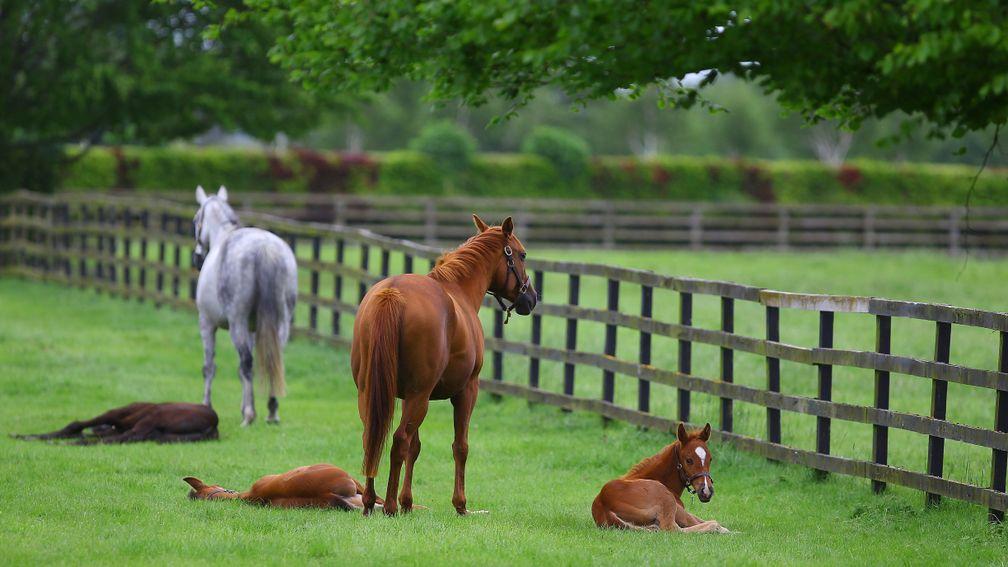Issue of increased inbreeding 'akin to global warming' claims new research
Study says the problem could weaken overall population fertility and health

The issue of inbreeding in the thoroughbred population is “akin to global warming” according to Professor Emmeline Hill, who has spearheaded major new research into the subject conducted by University College Dublin and equine science company Plusvital.
The resultant paper, published last week in the peer-reviewed journal Scientific Reports, analysed the DNA of more than 10,000 thoroughbreds, the largest set of horses examined to date, and established that there has been a highly significant rise in inbreeding over the last 45 years.
Q&A: Professor Emmeline Hill tells us more about the study
The research linked the increase in inbreeding to selection for favourable racing traits and the influence of popular sire-lines, with 97 per cent of horses in the study tracing to Northern Dancer, 35 per cent of European horses having Sadler’s Wells in their pedigree and 55 per cent of Australian horses having Danehill in their pedigree.
Professor Hill said: “Inbreeding has always been high in thoroughbreds, but it is getting higher. It's likely that, unchecked, inbreeding in the thoroughbred will continue to increase in a market where there is high demand for particular sire lines.
“The problem with inbreeding is that it can compromise overall population fertility and health. This is a highly significant issue akin to global warming, where inbreeding is accumulating in the population, and it must be addressed at an industry-wide level.”
Inbreeding can increase the chances of offspring inheriting recessive traits, which if unchecked can weaken the biological fitness of the population and hinder its ability to survive and reproduce – a circumstance known as inbreeding depression.
Unlike most managed animal production systems, there is no systematic, industry-mediated genomic selection or population management for the thoroughbred.
However, Professor Hill, chief science officer at Plusvital, added that solutions to the issue do exist.
“Our new data can assist the industry to monitor inbreeding and we have developed DNA-based tools that individual breeders can use to reduce the problem by choosing genetically diverse stallions for their mares,” she said.
“Pedigree is not powerful enough to help any more. Pedigree can be useful in highlighting broad trends in breeding practices, such as the predominance of certain sire lines leading to a high degree of relatedness. However, since thoroughbreds are now so closely related, there is no longer the resolution in a pedigree to accurately infer relatedness between individuals.
“Multiple studies show that pedigree-based estimates of relatedness are less accurate than DNA-based methods, which measure the true genetic relationship between individuals. Suitable outcrosses will be best identified using genetic data.”
Higher inbreeding is not associated with superior racing performance, and Professor Hill reiterated that the research should be seen as a positive for the industry.
“The purpose of this research is to provide information that, if harnessed in the right way, could be beneficial to ensure the future sustainability of the breed,” she summarised.
See our stallion videos:
Meet Coolmore's new stallions Calyx, Magna Grecia and Ten Sovereigns
Kirsten Rausing talks us through the Lanwades Stud roster
Highclere Stud's Jake Warren gives us the lowdown on Land Force
Published on 28 January 2020inFeatures
Last updated 01:27, 28 January 2020
- 'I'd rather do four or five right than maybe eight or ten wrong' - Goffs-bound filly leads Gallagher's select squad
- 'To me, to win a seller is as good as winning the Derby' - Hazy keeping the dream going for Alan Smith
- Michael Owen-bred Newmarket winner It Ain't Two has team dreaming of Royal Ascot
- Oh, Gino took the stage all right but Walk In The Park and Authorized stole their share of Aintree limelight
- 'You sometimes forget they're stallions' - meet up-and-coming eventing stars Galileo Dance and Galileo's Secret
- 'I'd rather do four or five right than maybe eight or ten wrong' - Goffs-bound filly leads Gallagher's select squad
- 'To me, to win a seller is as good as winning the Derby' - Hazy keeping the dream going for Alan Smith
- Michael Owen-bred Newmarket winner It Ain't Two has team dreaming of Royal Ascot
- Oh, Gino took the stage all right but Walk In The Park and Authorized stole their share of Aintree limelight
- 'You sometimes forget they're stallions' - meet up-and-coming eventing stars Galileo Dance and Galileo's Secret